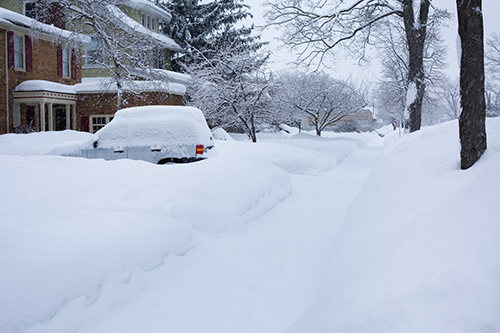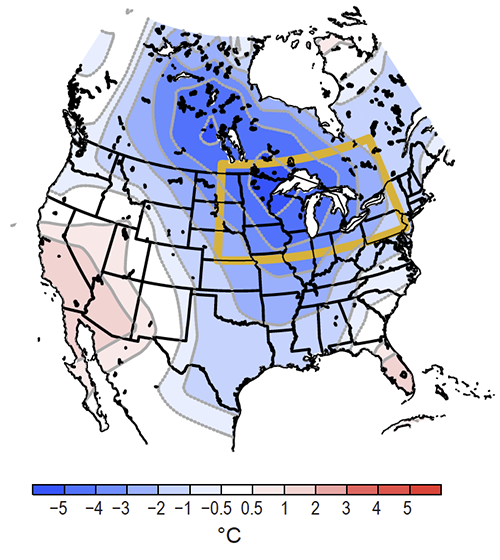How unusual was the long, cold winter of 2013–14?
Likelihood of extremely cold winters in Upper Midwest is much reduced, according to new study
Polar Vortex. These two words may send chills down a lot of spines. The term is associated with the exceptionally long and cold period between November 2013 and April 2014 in the upper Midwest and Great Lakes regions of the U.S. Shipments were delayed, transportation jeopardized, and the U.S. economy suffered losses of at least $4 billion. Many were surprised by the six months of harsh conditions, especially after two decades of mostly mild winters. But how unusual was it?
"This recent cold winter season was much less likely to happen than it was in the 1880s due to long-term climate warming," says Klaus Wolter, a researcher with the Cooperative Institute for Research in Environmental Sciences (CIRES) who works at the NOAA/ESRL Physical Sciences Laboratory (PSL).
In a new study — appearing in a special report on extreme events of 2014, released today by the Bulletin of the American Meteorological Society — Wolter and a team of researchers from PSL, CIRES, the Royal Netherlands Meteorological Institute and the Unviersity of Alaska, compared the 2013–14 event to winters over the past century to find out how extreme it really was, whether climate change played a role, and how likely it is to happen again.
The researchers analyzed temperature data from 1880-2014 to calculate average wintertime temperatures and when the coldest winters occurred. Then they compared this temperature record to satellite snow cover data from 1966 onward to determine how much regional snow cover is coupled with winter temperatures, and whether that relationship has changed over time. To investigate the possible role of human-caused greenhouse gases, they studied computer simulations from two different global models.
The winter 2013–14 event was the coldest winter on record since 1978–79 in this region, the scientists found, and that winter was the 10th coldest since 1880-81. Aside from 1978–79 and 1935–36, all other colder winters occurred before 1919. While snow cover was ample in 2013-14 (seventh highest since 1966-67), it was not quite at record-levels. Both observed and modeled winter temperatures in the region are highly positively correlated with snow cover extent.
The 134 year analysis concludes that a cold winter as severe as the 2013–14 winter would have been a once-a-decade phenomenon at the end of the 19th century, but is now likely less than a once-a-century event. The reason for this reduced risk of an extremely cold winter lies in the regional warming that has occurred since 1881—warming most likely caused by anthropogenic climate change. These results are consistent with other assessments of changing odds for cold winters and the role of climate change.
A new finding from this study is that the cold 2013–14 winter was not a result of increased year-to-year climate variability, since both observational and model results showed little detectable change of that kind. Observed winter snow cover has not yet trended downward over this region. If the modeled reduction in future snow cover were to be delayed further, cold Midwestern winters may remain a possibility for a little while longer.
Posted: November 5, 2015
CIRES is a partnership between NOAA and the University of Colorado.

